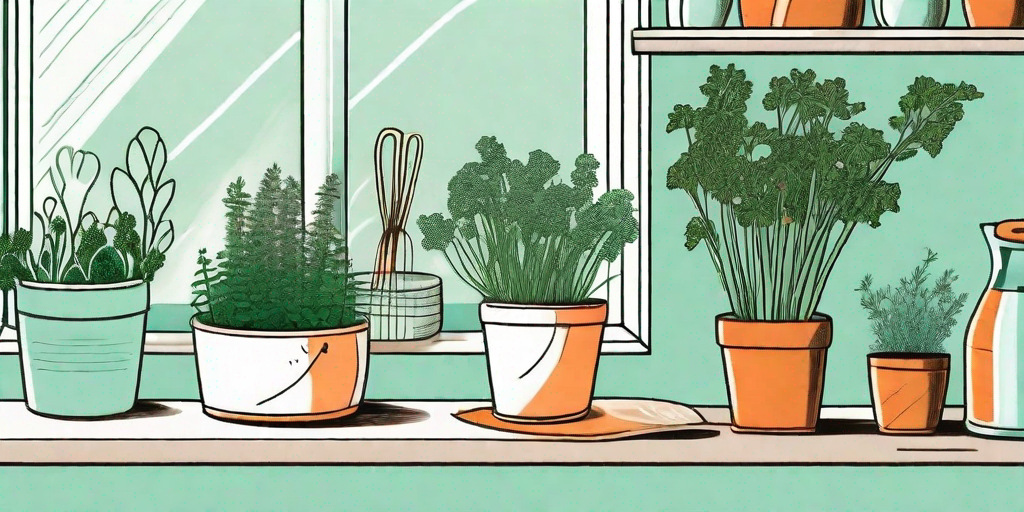
Carrots, the crunchy, sweet, and versatile root vegetable, are a staple in many kitchens worldwide. But did you know you can grow them indoors? Yes, you heard it right! With a bit of patience, some TLC, and a dash of cheeky humor, you can cultivate your very own indoor carrot garden. So, let's dive into the world of indoor carrot farming and learn how to grow carrots indoors like a pro.
Understanding the Basics of Carrot Farming
Before we delve into the nitty-gritty of indoor carrot farming, let's take a moment to understand the basics. Carrots are root vegetables that thrive in cool weather and well-drained soil. They prefer a soil pH between 6.0 and 7.0, and require a good amount of sunlight. Now, let's translate these outdoor conditions to an indoor environment.
For indoor farming, you'll need to mimic these conditions as closely as possible. This means providing your carrots with a cool environment, plenty of light, and well-drained soil. But don't worry, we'll guide you through the process, step by step, so you can grow your carrots with confidence and a bit of swagger.
Choosing the Right Carrot Variety
Not all carrots are created equal, especially when it comes to indoor farming. Some varieties are better suited for indoor growth than others. Shorter, rounder varieties, such as 'Paris Market' or 'Romeo', are ideal for indoor cultivation as they require less depth to grow. So, choose your carrot variety wisely, or you might end up with a bunch of underwhelming, stunted roots.
Remember, the key to successful indoor carrot farming is to choose a variety that suits your indoor conditions. So, do your homework, pick the right variety, and let's get ready to rumble!
How to Grow Carrots Indoors: A Step-by-Step Guide
Now that we've covered the basics, let's get down to business. Here's a step-by-step guide on how to grow carrots indoors like a pro.
- Choose a Suitable Container: Carrots need deep containers to grow. Choose a container that's at least 12 inches deep and has good drainage.
- Prepare the Soil: Fill the container with a well-draining soil mix. Avoid using garden soil as it may contain pests and diseases.
- Sow the Seeds: Sow the carrot seeds about 1/2 inch deep and 1 inch apart. Cover the seeds lightly with soil.
- Water Regularly: Keep the soil consistently moist but not waterlogged. Overwatering can lead to root rot.
- Provide Light: Place the container in a sunny spot or under grow lights. Carrots need at least 6 hours of sunlight a day.
- Harvest Your Carrots: Most carrot varieties are ready to harvest in about 70-80 days. Gently pull the carrots out of the soil when they're ready.
And voila! You've just grown your first batch of indoor carrots. Give yourself a pat on the back, do a little victory dance, and let's move on to the next section.
Maintaining Your Indoor Carrot Garden
Growing carrots indoors is just half the battle. The real challenge lies in maintaining your indoor carrot garden. But don't worry, we've got you covered.
Watering and Feeding Your Carrots
Carrots are thirsty creatures, but they don't like to swim. So, water your carrots regularly, but avoid overwatering. A good rule of thumb is to water when the top inch of soil feels dry to the touch.
As for feeding, carrots are pretty low-maintenance. They don't require much fertilizer, but a light feeding with a balanced organic fertilizer can give them a nice boost. Just remember, moderation is key.
Dealing with Pests and Diseases
Indoor carrots are generally less prone to pests and diseases than their outdoor counterparts. However, they're not immune. Common pests include aphids and root-knot nematodes, while diseases can include leaf blight and root rot.
The best defense against pests and diseases is prevention. Keep your indoor garden clean, ensure good air circulation, and avoid overwatering. If you do spot any pests or diseases, act quickly to prevent them from spreading.
Frequently Asked Questions
Can I grow carrots from carrot tops?
Yes, you can grow carrot greens from carrot tops, but you won't get a new carrot root. This is a fun project, especially for kids, but if you want to grow actual carrots, you'll need to start from seeds.
Why are my indoor carrots small and stunted?
This could be due to a number of reasons, such as insufficient light, poor soil, overcrowding, or choosing the wrong carrot variety. Make sure your carrots are getting enough light, are planted in well-draining soil, have enough space to grow, and are a variety suitable for indoor growth.
How long does it take to grow carrots indoors?
Most carrot varieties take about 70-80 days to mature. However, this can vary depending on the variety and growing conditions.
Conclusion
And there you have it, folks! A comprehensive guide on how to grow carrots indoors like a pro. With a bit of patience, some TLC, and a dash of cheeky humor, you can cultivate your very own indoor carrot garden. So, what are you waiting for? Get your hands dirty and start growing!











